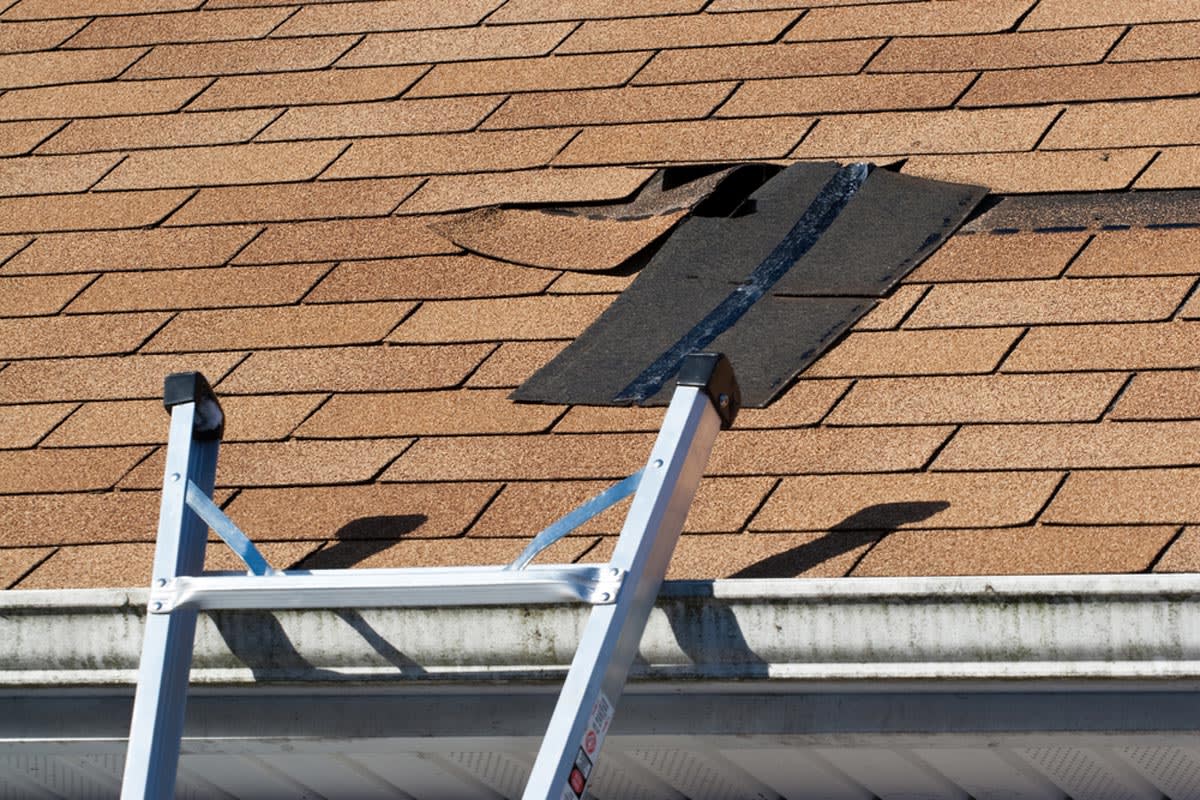Professional Roof Replacement Provider for a Sturdy Roof
Professional Roof Replacement Provider for a Sturdy Roof
Blog Article
Price Elements to Consider for Your Forthcoming Roof Substitute Job
When getting started on a roofing substitute job, recognizing the numerous cost variables is important for efficient budgeting. Key considerations consist of the selection of roof materials, which not just affect initial expenses but likewise long-lasting toughness, as well as labor costs driven by the competence of contractors and regional wage criteria.
Roof Material Selections

Asphalt tiles are amongst one of the most common options as a result of their affordability and ease of setup. Nevertheless, they may require replacement faster than various other products, affecting long-lasting costs. Steel roofing, while initially extra expensive, boasts remarkable durability and can last decades with marginal maintenance, making it an affordable choice with time

Lastly, timber trembles supply an all-natural visual however require routine maintenance to prevent rot and bug damages, possibly enhancing future costs. Eventually, picking the appropriate roof covering product is a vital choice that affects not only the instant budget but additionally the future financial effects of roof upkeep and replacement.
Labor Expenses and Incomes
The knowledge and skill of roof professionals dramatically affect the total expense of a roofing system replacement job. Labor expenses normally comprise a significant part of the total expenditure, differing based upon the experience and credibility of the professional. Very skilled workers regulate higher wages as a result of their training and proficiency in carrying out complicated roof jobs.
Several factors add to labor costs, including regional wage prices, the need for roof covering solutions, and the seasonality of the building sector. In metropolitan areas or areas with a high cost of living, labor prices often tend to be elevated - roof replacement. Additionally, throughout peak seasons, when the demand for roof covering services surges, specialists might enhance their prices accordingly
It's vital to think about not just the hourly wage but likewise the approximated time required to complete the project. An even more seasoned staff may work much more successfully, possibly decreasing labor hours and total expenses. When selecting a roof covering contractor, it is a good idea to obtain several quotes and evaluate their experience, making sure that you receive top quality craftsmanship without endangering your budget plan. Buying knowledgeable labor can lead to a more resilient and dependable roofing, inevitably conserving prices on future repair work.
Roofing System Style Complexity
Roofing system layout intricacy plays a vital role in establishing the total expense of a roof covering substitute project. The details of a roofing system's style straight impacts labor requirements, material selections, and job period. Much more complex roof her response layouts, such as multi-gabled or vaulted frameworks, commonly require additional labor hours and specialized abilities, increasing overall prices.
In addition, the kind and amount of materials required can vary significantly based upon the roof's geometry. As an example, roof coverings with high slopes or special architectural attributes might call for custom-cut materials, which can be extra costly than common options. In addition, the capacity for enhanced waste during installation must be thought about, as elaborate styles might result in higher product costs.
Furthermore, intricate roofs can position safety obstacles for specialists, requiring improved safety steps and equipment, which may better blow up labor prices. These variables highlight the significance of thoroughly analyzing your roofing's style complexity when budgeting for a substitute.
Ultimately, house owners must collaborate carefully with their roofer to fully recognize how layout complexity will influence their task's economic scope, guaranteeing notified choices that straighten with both aesthetic preferences and financial constraints.
Licenses and Laws
Browsing permits and laws is an important aspect of any kind of roofing system substitute task that can significantly influence overall expenses and timelines. Prior to beginning job, property owners must guarantee conformity with regional building codes, which might differ by town. These codes typically determine structural requirements, roof products, and also visual considerations, especially in historical districts.
Obtaining the needed authorizations is not only a legal commitment however can additionally avoid costly fines and job hold-ups. Usually, the application procedure entails submitting comprehensive plans and requirements, in addition to paying associated fees. Depending on the complexity of the project, inspections may be called for at numerous phases, contributing to the timeline and labor costs.
Furthermore, some regions might have details policies concerning power performance, which can necessitate the use of certain materials or methods that may be a he said lot more costly ahead of time yet produce long-term cost savings. Involving with a certified contractor who is acquainted with local guidelines can streamline this process and assistance alleviate threats. Inevitably, understanding and dealing with permit and regulative demands early in the planning stage can promote a smoother, more cost-effective roofing system substitute task.
Hidden Costs and Contingencies
Anticipating covert costs and backups is vital for home owners planning a roofing replacement, as these costs can swiftly rise the first budget plan. Related Site While the estimated price might cover the noticeable aspects of the task, unanticipated variables usually emerge, necessitating extra economic allowance.
One common hidden price is the discovery of underlying architectural damage during the elimination of the old roof. Issues such as rot, mold, or deteriorated sheathing can need instant attention, resulting in raised labor and product prices. Additionally, if your home has numerous layers of roof, the cost of elimination can be substantially greater than expected.
One more factor to take into consideration is the expense of products. Prices can vary based upon market conditions, and unexpected lacks might necessitate final replacements, potentially impacting the spending plan. Moreover, if weather condition conditions delay the job, additional labor expenses may accumulate.
To reduce these risks, it is prudent to reserve a contingency fund-- generally 10-20% of the complete project cost. This fund can give a financial barrier against unexpected expenses, ensuring that your roof replacement task proceeds efficiently and within budget. Correct preparation and foresight will certainly help house owners navigate these intricacies efficiently.
Conclusion
In conclusion, a detailed understanding of expense elements is important for an effective roofing replacement job. The option of roofing products, labor expenses, and the intricacy of the roof covering layout significantly influence the total budget plan. Additionally, compliance with authorizations and policies, together with the recognition of surprise costs and the establishment of a contingency fund, guarantees preparedness for unpredicted expenditures. By addressing these components, house owners can accomplish an effective and economically convenient roof task.
Report this page